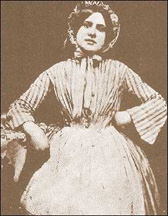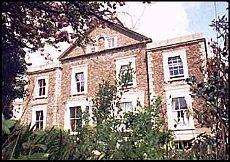[This document comes from Helena Wojtczak's English Social History: Women of Nineteenth-Century Hastings and St.Leonards. An Illustrated Historical Miscellany, which the author has graciously shared with readers of the Victorian Web. Click on the title to obtain the original site, which has additional information.]


Throughout Britain domestic service was the largest occupation of women in the nineteenth-century. Domestic servants were divided into upper and lower classes. Only a handful of households in the Hastings district were able to employ the stereotypical assortment of 'upper' servants such as butler, footman, governess, skilled cook, housekeeper, senior parlour-maid, head house-maid and lady's maid, as well as the 'lower' servants including kitchen-maid, scullery-maid, laundress, nursemaid, housemaid, stable-boy etc. For smaller households the priority was to employ female 'lower' servants to perform the dirty, heavy work.

A perky mid-century housemaid
As soon as a family's income reached about £150p.a. it engaged a young teenager as 'maid-of-all-work' (general servant). She usually worked 14 to 16 hours daily at the most menial chores. If the family had a shop she would also serve behind the counter.
In Hastings many maids were employed by lodging house keepers to do the washing up, clean out all the grates, sweep and scrub the floors and to run up and down stairs carrying buckets of coal, cans of hot water and breakfasts. Many houses were several storeys high.
As a family's income rose, so did the number of its servants. A housemaid and cook were the priority. Only wealthy persons employed male domestics since there was a servant tax on them. The many wealthy visitors who came for the summer often brought with them a lady's maid, while other servants were engaged locally or were included with the property when 'taken' (i.e. rented) for the season.

The Uplands in St Leonards was a goup of houses built for the rich (photo by HW May 2000). In 1861 at No. 1 lived widow Jemima Budges, a landed proprietress aged 60, with her two sons and five live-in servants: housekeeper, cook, housemaid, butler, and general servant. Next door a magistrate, his wife and three children were looked after by six female servants and a footman, all living-in.
Hastings Old Town had fewer houses for the rich. In 1851 landed proprietress Elizabeth Nilson, aged 75, lived at The Croft with her daughter and three grandchildren, a governess, a lady's maid, a children's maid, a housemaid, a cook, a kitchenmaid, a gardener and two footmen. No. 113 High street was inhabited by magistrate Albert Ranking, his wife, nine children, and six live-in servants.
For more about this subject see What Kind of Staff Would a Victorian Household Have? by John Burnett.

Last modified 2000